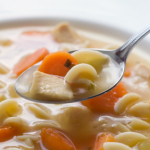
Homeopathy is a system of medicine over 200 years old, with roots going back to Hippocrates. It is in widespread use and officially recognized in many countries, most notably in the United Kingdom, France, Germany, Holland, Italy and India. There are homeopathic teaching hospitals located in the United Kingdom and India. Homeopathy has a long history in Canada and the United States, as well, though its popularity has declined with the emergence in the last 50 years of the so-called “wonder drugs.” However, as public concern over the disease effects (so-called “side-effects”) of these chemical drugs in crude doses has increased, interest has once again grown in the gentle, curative system of medicine known as homeopathy.
Where the prevailing medical system in North America generally works on the natural Law of Opposites (anti-biotics, anti-depressants, anti-histamines), homeopathic medicine works on the Law of Similars, which has been identified since Hippocrates’ time as the natural law of cure. The use of medicine on the basis of opposites only gives temporary relief or simply suppresses the disease, driving it deeper into the organism – it cannot cure.
Where allopathic (conventional) medicine does use the law of similars, it is inadvertent and the dose given is too strong, causing iatrogenic (meaning “doctor-caused”) diseases. For example, Ritalin is an amphetamine (speed) chemically identical to cocaine. Conventional medicine gives this “speed” to children they feel are “speeding,” or hyperactive. Radiation is one of the most horrific carcinogenic agents, yet it is used in cancer treatment. The concept is sound, but the dosage can be deadly at worst, or dangerous at best.
This is the way the artificial disease of the medicine is supposed to annihilate the natural disease. In a patient with hay fever symptoms, for example, an infinitesimal amount of the remedy Allium cepa (red onion) is used to cause a slight initial Homeopathic medicine uses minute amounts of substances that are similar to the symptoms of the disease. In exacerbation of symptoms, followed by relief of the symptoms.
The Law of Similars is, interestingly, the principle behind vaccinations. However, the dose and method of delivery commonly used by doctors poses a significant risk of harm to those being vaccinated. Conventional vaccinations involve crude doses of the microbe linked to the disease being vaccinated against, and the dose is injected directly into the blood stream, bypassing all of the natural defense mechanisms of the body. Thus, the body receives too strong a dose and too suddenly, creating a shock to the organism that can lead to reactions, from mild to severe, including death in some cases. The use of actual viral material also sets the body up for auto-immune disorders, a fact well documented in the research literature.
Along with the crude quantity of virus material injected directly into the person’s bloodstream, there are also the carrying agents in the vaccine fluid itself. It can contain acetone – used in nail polish removers and furniture strippers; thimerosal – a mercury-derivative outlawed for use in contact lens wetting solutions because it is a carcinogen; formaldehyde and other insidious substances.
Neurological complications
- Paralysis
- Guillain-Barre Syndrome (GBS)
- Facialis paralysis
- Paralysis of the extremities
- Landry syndrome (8)
- Hypoglossus nerve paralysis (11)
Click For the full list of possible side effects
There is a belief generally that the usual flu vaccine is still worth it despite the obvious drawbacks. However, there is little or no acknowledgment of a safer and more effective alternative, mainly because of ignorance, prejudice and the power of drug companies (in terms of advertising and control over expensive research). There IS an alternative. Homeopathy – the safe, effective medicine.


